It’s a tough question, and as you might assume, it comes with a myriad of considerations.
What’s the location? What is the price point? How long are you looking to remain in the house?
I’m not convinced that there’s money in “flipping” houses in Toronto anymore, unless it’s your primary business, so today I’d like to ignore that realm of possibilities, and instead I’d like discuss the idea of building versus buying as it pertains to a young family who is looking to remain in the house for 20-25 years.
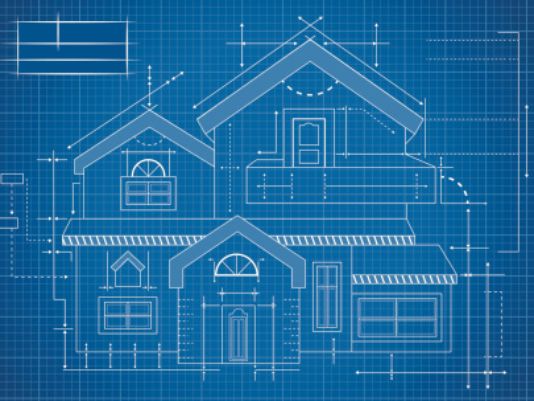
I feel sorry for people who own $3,000,000 houses, don’t you?
I mean, the market for $600-$800K freehold single-family homes is red-hot, and has been appreciating 8-10% per year for the last three years!
And yet the folks that own houses at the higher of the price spectrum are seeing everything around them going up, as their own house prices have flat-lined.
I know, I know – cry me a river. So Mr. & Mrs. Moneybags aren’t making more money on their money…
It’s like on the radio this morning – the host talking about how “tough” it is for Lebron James, to have to play 46 minutes of a 48 minute game in the N.B.A. Finals, with no support from his teammates, fly back-and-forth across the country, and the toil it takes on the body, while all the while, getting paid $30 Million per year.
You know what’s tougher than that? Anything.
The host actually realized how dramatic he was being, and said, “Yeah, sorry, I know – if you’re a blue-collar labourer, grinding with your hands all day, you’re sitting here wondering, ‘Why am I supposed to feel sorry for Lebron James?'”
But putting things in a relative perspective, what Lebron James is asked to do, compared to what any player on the opposing Golden State Warriors is asked to do, is an impossible task. He has to do 3-4 times more than anybody else on that court.
So while my parallel here might be losing steam, I find it interesting that certain segments of Toronto’s real estate market have appreciated 3-4 times more than other segments.
It’s a simple case of supply and demand, as it always seems to be.
There are more people looking for $400,000 downtown lofts and $650,000 houses than there are looking for $3,000,000 houses, so it seems to reason that the former will out-appreciate the latter.
But as the former is also fast-paced, and frenetic, the latter part of the market is so incredibly laid-back, and works almost backwards.
We see $599,900 list prices for 3-bed, 2-bath semi-detached houses resulting in $725,000 sales. But when it comes to a lot of the $2M, $3M, and $4M houses, the process is the exact opposite.
A lot of the baby-boomers are selling their homes, and “cashing out” their nest-egg, but they haven’t transacted in real estate in so long that they’re not used to the pace. Selling their house in 65 days is totally normal to them, and under-pricing sounds absurd.
The result is that many houses over $2M sit for a while, or are reduced in price, or both.
And what I see out there is an opportunity for buyers in this price point to cash-in as the previous generation cashes out.
In the $600-$800K price range, we don’t “build” houses; in fact, we barely renovate them. But in the $2,000,000 price range, often the land itself is worth more than the house.
The price discrepancy between one house, and the house next door, is massive in some of these upper-end areas.
You might have a $4,000,000 house, brand-spanking-new, sitting next to a $1.9M “tear-down.”
So buyers in this price point need to decide: “Do I buy new, or buy a lot, and build?”
I want to look at one particular lot in Rosedale that I was watching last year, and this one was a particularly wild ride!
“The house,” which I’ll refer to it because of the ever-present grey area and changing rules about sold prices and all that BS, was first listed for $2,700,000 in July of 2014:
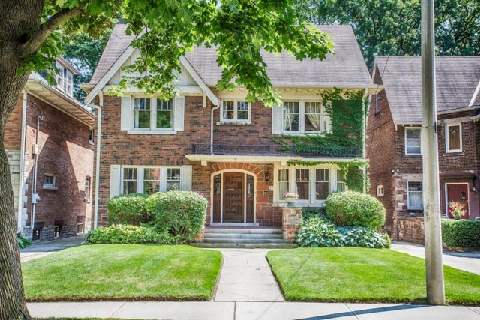
It’s gorgeous!
From the outside, at least.
On the inside, it needs work. Lots of work.
In fact, this house would be best-utilized as nothing but a brick frame, with a gigantic hole in the ground behind it. That’s right – it’s more than a “gut.” It’s a new-build.
You know what – a picture paints a thousand words, so here you go:
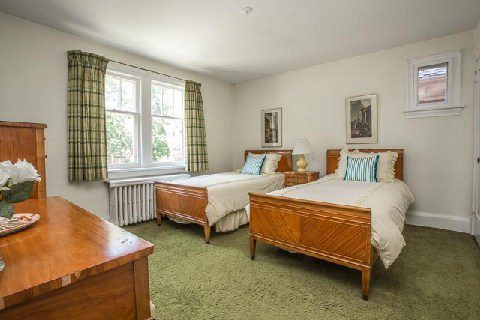
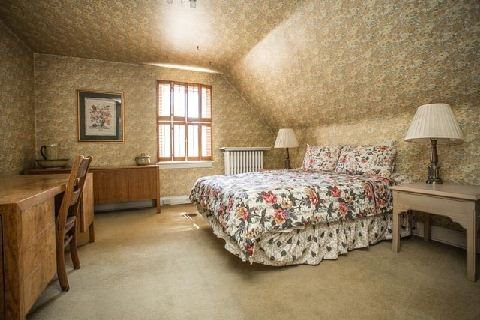
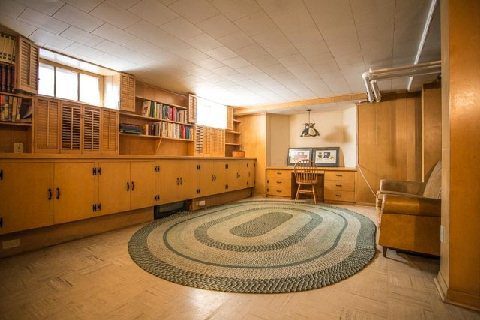
This was a 44 x 140 foot lot, backing on to the ravine.
The 3-storey layout would be better than a 2-storey layout if it were move-in ready, but I felt that this was truly only land value, so there wasn’t a ton of added value there.
This was about neighbourhood, street, style, and lot size.
And I loved the look of this house from the get-go!
In July of 2014, I was looking around to see what a “finished” house would go for on this street, of similar lot size, and I figured around $3,600,000.
Make no mistake – buying that $2,700,000 “house,” which is really a nice way of saying, “lot,” means you’d be spending the next ten months building a new 4,000 square foot home.
And unless your primary occupation is “home builder,” then I can guarantee it will be the most stressful ten months of your life.
I shudder to think about living and breathing “the house,” day-in, day-out.
And trust me – I’ve thought about building my own house one day, but given that I live a carefree, downtown-condo lifestyle, how do I possibly make that transition?
The phone rings on a Monday, and it’s your interior designer, saying that the tiles you wanted are on back order, so you have to put the kitchen installer on hold. But the kitchen installer has another job to do, and he can’t reschedule, since the floors are going in right after.
Your architect and your builder don’t like each other, your neighbours have called the city four time about the mess and the noise, and your husband/wife is more stressed than you are.
Is it worth it?
To live and breathe “the house” for almost a year? When you move in, will you be sour? Will the experience have been so awful and draining, that you look at the house as an ever-present symbol of the year you suffered through?
As with many things in life, perhaps it comes down to the price.
Maybe you can’t put a price on happiness, but you can certainly decide, “I would do ‘x’ if it cost ‘y’,” in many cases in life.
So at what price would you build, and at what price would you buy?
That $2,700,000 lot in Rosedale would be maximized by a 4,000 square foot house, at about $250 per square foot. So an even $1,000,000 to build, thus putting you at $3,700,000, plus $100K in Land Transfer Tax on the original purchase.
So that means you’d have spent $3,800,000 for a house that’s worth approximately $3.6-$3.8M.
Is it worth it?
Many people want to build a house as a way to make money on paper, but others simply want to have their own designs, their own features, and their own finishes.
I remember about four years ago when I was working with two different clients in The Kingsway area. Both were looking for a “building lot,” as both wanted to design their own homes from scratch.
As we moved through that spring market, the prices started to make no sense! We’d see a $1M lot listed for sale, where we knew it would cost $800K to build, and the house might be worth $1.9M in the end, but $1.8M was a safe bet.
Then then the damn lot would get nine offers and sell for $1.3M!
The prices made no sense.
What incentive was there at this point to spend 8-12 months building a house, if you were going to be in for $2M, on a house worth $1.8-$1.9M?
One client ended up buying a new-build, and the other bit the bullet and picked up a lot for $1.2M and built.
So is it worth a premium to pick your own designs?
Or in order to bite that bullet, would you want to make something on paper?
As for the Rosedale house listed last July at $2,700,000, it didn’t sell.
In fact, it sat on the market from July 11th, 2014, at $2,700,000, until it was terminated and re-listed on September 3rd……….for $2,395,000.
Wow. What a price drop!
$305,000!
You certainly don’t see that every day.
So as we looked at this in September of 2014, did building a new house on this lot make sense?
$2.4M for the buy, $1M for the build, with $88K in Land Transfer Tax, and you’re out with a new house for under $3,500,000, knowing that the result is worth $3.6-$3.8M.
Now does it make sense to build?
Or would you rather pay $3.6-$3.8M for the same thing, and not have to do any of the work?
Therein lies the question, in response to the “build or buy” title of this post.
At what point is the deal so good, that your decision is made for you?
Believe it or not, this Rosedale house didn’t sell at $2,395,000 in September of 2014.
In fact, it was re-listed, again, in late-October for $2,195,000. That’s over a half-million-dollars lower than the initial list price.
So again – $2.2M to buy, $1M to build, and $80K in LTT, and you’re out under $3.3 Million.
Now does it make sense?
Well I’ll tell ya – somebody got one HELL of a deal. Take a look:

Somebody got this property for a whopping $725,000 less than the original list price.
Don’t get me wrong – I thought the initial $2.7M list price was nuts, but I never though I’d see it sell below $2.1-$2.2M.
The person who builds on this lot is going to make a $500,000+ profit, albeit on paper, but it’s still equity, and it’s still net worth.
That house took four months to sell, and was listed three times.
I’m sure the owners (it was an estate, of course…) knew they were over-pricing to begin with, but I think it’s fair to say that the market didn’t respond well to this listing in the end.
I’ve seen a lot of higher-end properties reduced in price, and listed multiple times. Some have sat on the market for what seems like an eternity, at least relative to what we’ve come to expect in Toronto.
Perhaps it’s because the baby boomers looking to downsize don’t usually buy before selling, and thus they don’t “need” to sell, like most home-sellers under $1M, who have already bought.
But is it fair to say, if you have the money, and the wherewithal, there might be the odd “deal” in Toronto right now if you’re looking to build your own house?
It’s hard to look at the case study above and provide an argument to the contrary…































Marina
at 7:55 am
It also depends on how specific you are with your requirements (and I don’t mean kitchen tile).
A neighbour five houses down the street just finished his new home. He has five kids, so he wanted a four bedroom, but he needed three bathrooms upstairs, and two of the bedrooms had to work well with a 2 bed layout. Add a few other things and it made more sense to build.
Did he make money on paper? Maybe, or maybe not.
But it’s hard to find exactly what he was looking for and with such a huge family it made sense to go the new build route.
On a side note, another new built down the street has been sitting for months because it was designed for a raging bachelor. In Lawrence Park. Crazypants.
Joe Q.
at 9:12 am
David, you comment that “it’s more than a gut — It’s a new-build” and offer photos as illustration, but aside from the very dated decor and layout, were there major structural or engineering issues with this house?
Noel
at 9:15 pm
I have seen a ton of these homes in Rosedale and it can be a tough call whether it should be a new build or demolition. If any of the basement height being low, the ceiling heights on the first and second floor being low or if the lot can handle an appreciable higher square footage without going to committee then total demo is the best option. I have seen very few that have had such structural problems that a demo is actually required. However, gut jobs can be a real PITA such that the savings over total demo can be a lot less than you expect that I lean to total demo.
johnnychase
at 10:54 am
If you’ve looked a ton of these homes in Rosedale, then you woulld know that you can’t build new. They’re all protected by heritage. You can add on, but you can’t demo.
Mike
at 11:30 pm
If your going to renovate after 30-40 years you’re going to need to consider updating plumbing and electrical. To do that you might as well go back to the studs.
Noel
at 12:06 pm
Yes, if you open the walls up you had better update at least the electrical. The plumbing is not necessary unless you have low flow issues or want to move a lot of fixtures.
My neighbour who moved in recently has not been able to get full coverage on their house even though they have not renovated because they have knob and tube.
Kyle
at 1:19 pm
@ Noel
I suggest your neighbour try contacting David Slack Insurance Broker. Full coverage and lower premium then i was quoted by TD.
The big Insurance companies are useless and evil when it comes to old houses, especially the bank affiliated ones. They will ask all sorts of questions that no new owner could possibly have the answers to, instead of sending someone out to do their own due dilligence. They will then either: not cover you, charge you more if you don’t have all the answers, or re-neg in the case of a claim if your answers are even remotely off.
Kyle
at 9:35 am
@ David
The Rosedale house used in your example is a category C Heritage building under the North Rosedale Heritage Conservation District (HCD), in which case it can’t be torn down and changes are largely limited to the interior or the back of the house. Other areas like The Kingsway, Baby Point, Riverside/Brule Gardens, while not HCDs are “Home Smith” developments, and any tear downs would likely be met with humungous neighbourhood opposition, resulting in long delays and stress for the builder.
Overall, i agree there are some “opportunities” to be had in some of the old cachet neighbourhoods (assuming that’s what one likes), but IMO that has more to do with condition and location. Many of these old manisions, are dated and require a lot of work to modernize them to how people want to live today. A lot of these 2M+ places don’t even have centralized air conditioning. They have closed off rooms, relatively small kitchens, and they have small doors to access the backyard instead of big glass Nana walls. Even if it is not a full on gut or tear down, most of them require some degree of work. Also in the last decade there has been a huge shift in the desirability of walkable downtown neighbourhoods vs the old money neighbourhoods. Decades ago the wealthy wanted to be insulated from the “bad” downtown neighbourhoods, and so they congregated to the security of these exclusive areas, these days there is almost no such thing as a “bad” downtown neighbourhood anymore. So people instead are choosing walkability, design and amenities over things like cachet, lot width and exclusivity. On a $ per sq ft basis, downtown neighbourhoods like Riverdale, Playter Estates, Little Italy, Trinity Bellwoods, Beaconsfield, Roncy and High Park are starting to match or exceed the prices in Moore Parks, The Kingwsway, Lytton Park, Lawrence Parks and Hoggs Hollows.
Noel
at 12:37 pm
Kyle,
You’re wrong about demolition. Demolition of A and B-rated buildings are ‘vigorously opposed’ but C-rated and unrated properties have more flexibility. The condition is that the replacement be ‘equally able or more able to contribute to the heritage character of the district’. Demolition permits are no longer approved in such districts, btw, unless the building permit is approved.
So, this C-rated property (if it is indeed C and not B, I doubt it is A) can indeed be demolished. One just then has to go through the extra cost, rigmarole and red-tape of going through the ‘busy-body’ neighbourhood committee and the various city committees for approval of the replacement property. However, I doubt the Heritage District designation has any teeth anyway because since Sourth Rosedale district was designated there is at least one ultra-modern home that had their demolition permit approved afterwards and in North Rosedale with Integral House being there so it’s hard to argue that ultra-modern homes have no place in the ‘heritage’ streetscape. Also, we all know if you fight it to the OMB you always end up winning.
Kyle
at 3:12 pm
It is listed in the North Rosedale Heritage database as Category C, but i don’t want to print the address as David has redacted it in the listing. While it is theoretically “possible” to demolish, it isn’t just a simple matter of more dollars and more rigamorale, there is a high probability that the demolition will get rejected by the Heritage Preservation Services, the City and the OMB, as it is the OMB that bestows the HCD designation under the Ontario Heritage Act. Meaning they would in effect be over-ruling themselves.
Also in regards to modern builds both Integral House and Wolf House are designated heritage properties. IMO heritage is more about controlling and maintaining a certain standard for a community than maintaining a homogenous architectural style or period. The effect of which becomes very obvious if you do a google streetview of Douglas Dr vs Douglas Cr
http://www.tobuilt.ca/php/tobuildings_more.php?search_fd3=7071
http://www.tobuilt.ca/php/tobuildings_more.php?search_fd3=9684
Mike
at 8:41 am
They’ve stopped allowing demos of C houses for some time now in Rosedale. You pretty much have to find a home that doesn’t have a rating. 20 Cluny is an example
If you look at 15 Cluny the listing boasts that the house is unrated so you can do what you want with it.
Noel
at 12:01 pm
There is no legislation or city bylaw that does not allow demoing of C-rated homes. The condition upon which they are allowed to be demo’d which I reference above (which is from an OMB Heritage court case btw) has never been changed.
What is the source of your belief that they don’t allow it? The fact that it may not have happened recently or for a while does not mean it is not allowed.
Mike
at 5:41 pm
OMB can overturn decisions made at a municipal level. The designations are covered under Provincial law (Ontario Heritage Act 1990) where the OMB has no standing.
In Forest Hill demo permits are denied by the city all the time but the builders just go to the OMB in those case.
You use to be able to knock down a ‘c’ and replace it but now even that has stopped. In theory it could happen but the chances now are very slim as the Rosedale Ratepayers Associations are worried silly about what has happened over in Forest Hill.
Noel
at 8:41 pm
Not sure where you are getting your information from because I know of at least 2 C-rated properties that have been torn down in the not too distant past.
Mike
at 9:45 pm
What’s the “not too distant past”?
Again, you use to be able to knock down a ‘C’ but now it’s next to impossible. You bring them a ‘c’ with a broken foundation then I’m sure they’ll allow the demo, if you say you want to knock down 116 Glen and it’s highly doubtful.
Noel
at 1:14 am
What I am asking is how you know. I have not seen any City directive that C-rated homes cannot be torn down regardless of the condition they are in, yet I have seen As such, your observations are strictly anecdotal. MIne is not as what I wrote above comes from a court case. I do realize that what might be happening in practice could possibly be different. However, given the court case I would suggest any decision by the City not to allow a C-rated home to be torn down could be actionable.
Mike
at 8:18 am
I’m telling you, it’s not a municipal issue, it’s provincial. You won’t see a “city directive’ because it is a provincial law.
Noel
at 9:06 am
Yes, I get that, but what is the source of your knowledge that they aren’t tearing down C-rated homes. Thats what I keep asking and you will not answer.
David Fleming
at 10:13 pm
@ Kyle
I should clarify.
When I say “new build” or “new home” or “tear-down,” I mean that you’ll leave the facade – just the brick, and nothing else.
From there, you build a new house.
Not only are there heritage issues (I don’t believe this home is heritage designated, however), but you’d also want to keep the facade because it’s beautiful!
You just want a new house within that facade, however…
Noel
at 12:04 pm
Yes it is C-rated. Just check the North Rosedale Ratepayers Association website where you can enter any home’s address and get the heritage designation, whether A, B, C or unrated.
GIven the terms you use for new build, new home or tear down, what is your term for not leaving the facade? I have never heard those terms used the way you do before. Generally it’s either a total gut-job or the terms you mentioned, which most take to mean demolition of the home first.
Noel
at 10:01 am
Good post. Odd though that the cross streets listed on that listing don’t even come close to each other. Highland Crescent is just SW of York Mllls & Bayview and Douglas Drive is in North Rosedale (but Highland Ave is in North Rosedale). Kinda proves my point about real estate agents – so much hard work but can’t even get the streets on the listing correct!
The other point you forgot to mention (which I think you should know give you are an agent) is that North Rosedale (as well as South Rosedale) is a Heritage District. That probably adds about $50-$100K to the cost of building a home there even if the home is unrated as the building permit has to be approved by both the neighbourhood Heritage Committee (a group of unelected busy bodies that live in the area) and by another city committee that is separate from the building permit approval department. On top of that there are no guidelines in the legislation except for basically the home has to fit in with the streetscape. That sure leaves a ton of latitude for bureaucracy to mire your home in endless red tape. I have seen neighbour’s plans go back 3 and 4 times between the owners and architect and these committees and add as much as 6-9 months to the time from purchase of a home to move-in of the home that has replaced it. That increases the cost in financing and architects fees as well as a lot of other sundry items. Also if you buy a home that is rated A, B or C according to the legislation, of which there are over 200 of the over 500 homes in North Rosedale, I wish you good luck tearing it down. Anyway I that brings your ‘profit’ down to about $400K+. Maybe this home was rated and therefore not be a candidate for demolition but only for renovation. You article doesn’t even mention that very important issue.
The question that you posed in your article is really the one people should be thinking about: Is it worth a premium to pick your own designs? For some it is and we cannot impose are value matrix on them. Homes are much more than just dollars and sense for some people and especially where they plan to live in the home for the very long term.
Ch.T
at 12:45 am
We get it. You are right. And clearly smarter a more thorough than ANY realtor.
Ch.T
at 12:46 am
And
Noel
at 4:36 pm
31 Douglas Dr is listed right now for $2,995,000 on almost exactly the same size lot as 27 Douglas Drive, above, right next door. 31 Douglas does have a bit of a dated look inside (but not as bad as 27 was) but is in very good condition. I think it’s way overpriced and will likely go for about 2.6 or so.
Guy
at 11:03 pm
Does anybody think it’s a little nuts that a house like this – which is in basically OK shape structurally and in terms of its building envelope – is universally seen as a teardown?
Why not keep the walls and the structure and do a $300 or $400k renovation to end up with a totally fine house with all new finishes?
keep it!
at 9:56 am
Yes, as someone who has lived in several 100+ year old houses downtown in the past 15 years, the idea of tearing down a comparatively new house just because the interior (including plumbing and electrical) is dated, is quite nuts to me.
Noel
at 12:13 pm
I do not think most think that is the case. David Fleming does for some reason but he has not detailed why. I agree with you. One could even only update the kitchen and the bathrooms with new cabinets and fixtures, change some light fixtures, sand and varnish the floors and just paint the rest. My neighbours bought a similar home last year. They could not afford to renovate it so they had the house painted and did some minor landscaping themselves on the outside.
Smart move. Many shunned the home as it likely would have been $500K+ to renovate it and it did not show well (should have been staged but wasn’t). It has great bones. Although these people do not have the $ to renovate it now they both have good jobs so what I figure is they got a lifetime non-expiring call option at a great price for a home that can be fantastically renovated when they have the money. It would now likely cost 10% more to buy at least.
David Fleming
at 3:53 pm
@ Noel
It’s about maximizing the asset value.
If you had a raw diamond, you wouldn’t just smash it with a hammer, and sell off the pieces that result. You would instead inspect the diamond with a computer program, go over hundreds of different options for cuts, and sizes, and plan accordingly.
The way to maximize this lot is to keep the brick facade, and build a new home behind it.
This “house” is 100-years-old. It’s out of date. It’s obsolete.
You watch movies on demand now. You don’t try and find a Beta-Max copy and hook up your old machine.
A lot has changed since this house was oil and/or coal fired.
As a prudent owner, you want to start from scratch, in 2015, and use 2015 materials, designs, and advances in technology.
There are a lot of houses this age that have seven different kinds of wiring and plumbing from seven different eras. If you’re going do to this right, maximize the value, and plan for 30-years, everything should be new.
You’re right about buying a house like this, living in it for a while, and riding the appreciation. That makes sense. But eventually, the way to maximize value is a new home on the lot.
Noel
at 4:39 pm
Not everyone has the budget to ‘maximize’ the value or necessarily wants to do that so ‘prudence’ does not always win out and also not always in the short term.
condodweller
at 9:37 am
I am a unique individual with unique tastes and I like to be different from the norm. When the iphone came out I did not buy one only because everybody else had them. Sure it was different and amazing design but the fact that everyone was buying one turned me away. For that reason I would love to build my own house with my own design even if it meant the resulting price will be higher than what it would be worth at the time. I doubt any of the people who’s homes are featured in the million dollar room would ever get their money out of the house but that’s not the point. They have virtually unlimited funds to do what they like, or to out do their friends/neighbours. When you have high net worth spending an extra couple of hundred thousand to get what you like is not an issue.
Kyle
at 3:29 pm
To me there are a couple of situations were a total rebuild makes sense. First situation being, if one had a specific vision, or have found a very special lot (e.g. backing onto a ravine, river, or pond, or with an incredible view or a super-sized lot). Undertaking this kind of rebuild would not be about economics, it would be about getting something very unique and having it built to one’s exact specifications. Second situation being if you found a lot that could be sub-divided, or a lot with a tiny bungalow or decrepit gutter in a nice neighbourhood. Undertaking this kind of rebuild would purely be about economics and maximizing the value of the lot. The Rosedale house in the example to me does not fall into either category, personally i would never consider buying it to rebuild. To renovate, add-on and update – yes, but IMO, it only needs about 500K to be an amazing house.
Marco
at 12:06 pm
This house is not a tear-down at all. Only ignorant snobs with more money than brains would do such a thing. If you have ever held a hammer in your hand or worked in reno over summers as a kid just out of school to pay for college then you would know better.
At best this house needs 75-125K if that to make it all sparkly and new again. But it will need a bit of planning, a bit of shopping around and a little bit of patience and restraint.